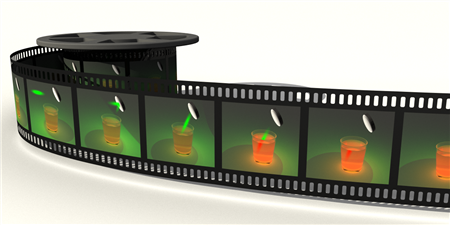This story originally appeared on Think.Innovate, showcasing how research using TI DLP® Technology at the Washington University in St. Louis enabled the world's fastest 2-D camera. Happy reading!
The majority of us don’t give much thought to individual seconds in our daily lives. But Dr. Lihong Wang, the Gene K. Beare Professor of Biomedical Engineering at Washington University in St. Louis, lives and works one second at a time.
Lihong and his colleagues have created the Compressed Ultra-fast Photography (CUP) camera, the world’s fastest 2-D camera – taking up to 100 billion frames per second. The typical point-and-shoot camera takes 2-15 frames per second.
The results of Lihong’s record-breaking camera could forever change how we study astronomy and physics — and how we use biomedical imaging.
What separates this camera from other ultra-fast cameras? If Lihong wanted to see the slow-motion of a laser pulse before the invention of the CUP camera, he had to photograph multiple laser pulses in succession, and stich the results together to create the final image. With the CUP camera, he can form the same image using only a single laser pulse. The end result is a mini-movie created by the frames the camera captures with the extremely high speed.
This innovation is significant because researchers can now capture non-repetitive moments in real-time with detail and resolution unlike anyone has seen before, such as a supernova exploding in space documented at 100 billion frames per second.
“I expect broad applications of CUP in advancing human understanding of the universe,” Lihong said.
Keep reading this article in its entirety here.
Students, are you inspired by all that technology can do? Be sure to share the research and projects you are working on in our student project repository. Also! Don't forget to enter the TI Innovation Challenge Design Contest by May 24, 2015 for your chance to win and get recognized for your design projects.
Professors, are you working on research that could revolutionize the future? We'd love to know! Contact us and share how you are using TI technology in your research.


